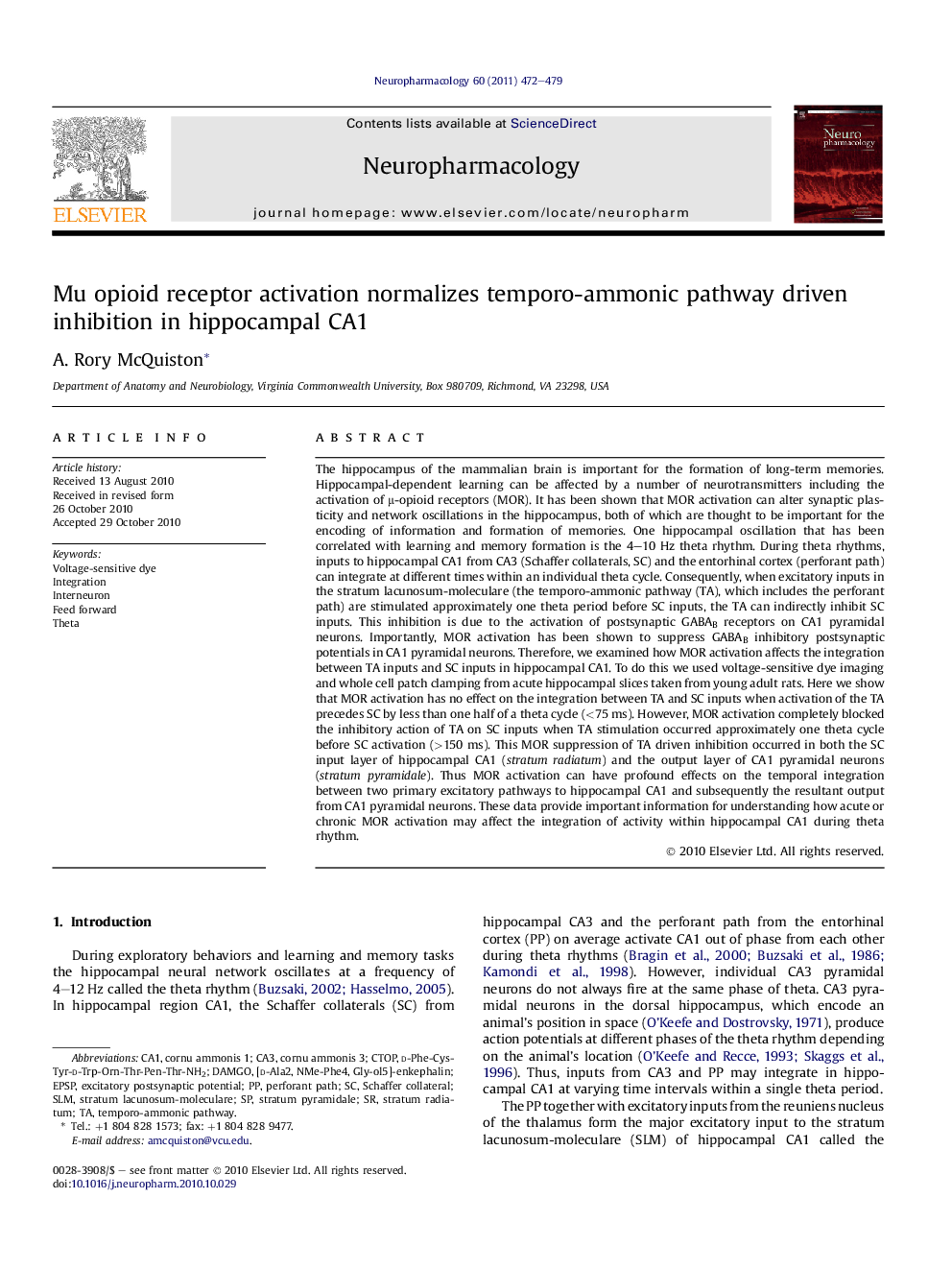| کد مقاله | کد نشریه | سال انتشار | مقاله انگلیسی | نسخه تمام متن |
|---|---|---|---|---|
| 5816042 | 1556654 | 2011 | 8 صفحه PDF | دانلود رایگان |

The hippocampus of the mammalian brain is important for the formation of long-term memories. Hippocampal-dependent learning can be affected by a number of neurotransmitters including the activation of μ-opioid receptors (MOR). It has been shown that MOR activation can alter synaptic plasticity and network oscillations in the hippocampus, both of which are thought to be important for the encoding of information and formation of memories. One hippocampal oscillation that has been correlated with learning and memory formation is the 4-10 Hz theta rhythm. During theta rhythms, inputs to hippocampal CA1 from CA3 (Schaffer collaterals, SC) and the entorhinal cortex (perforant path) can integrate at different times within an individual theta cycle. Consequently, when excitatory inputs in the stratum lacunosum-moleculare (the temporo-ammonic pathway (TA), which includes the perforant path) are stimulated approximately one theta period before SC inputs, the TA can indirectly inhibit SC inputs. This inhibition is due to the activation of postsynaptic GABAB receptors on CA1 pyramidal neurons. Importantly, MOR activation has been shown to suppress GABAB inhibitory postsynaptic potentials in CA1 pyramidal neurons. Therefore, we examined how MOR activation affects the integration between TA inputs and SC inputs in hippocampal CA1. To do this we used voltage-sensitive dye imaging and whole cell patch clamping from acute hippocampal slices taken from young adult rats. Here we show that MOR activation has no effect on the integration between TA and SC inputs when activation of the TA precedes SC by less than one half of a theta cycle (<75 ms). However, MOR activation completely blocked the inhibitory action of TA on SC inputs when TA stimulation occurred approximately one theta cycle before SC activation (>150 ms). This MOR suppression of TA driven inhibition occurred in both the SC input layer of hippocampal CA1 (stratum radiatum) and the output layer of CA1 pyramidal neurons (stratum pyramidale). Thus MOR activation can have profound effects on the temporal integration between two primary excitatory pathways to hippocampal CA1 and subsequently the resultant output from CA1 pyramidal neurons. These data provide important information for understanding how acute or chronic MOR activation may affect the integration of activity within hippocampal CA1 during theta rhythm.
Research highlights⺠Temporo-ammonic pathway activity inhibits Schaffer collateral (SC) input. ⺠Temporo-ammonic pathway activity inhibits CA1 pyramidal cell firing. ⺠μ-Opioid receptor activation blocks temporo-ammonic effects.
Journal: Neuropharmacology - Volume 60, Issues 2â3, FebruaryâMarch 2011, Pages 472-479